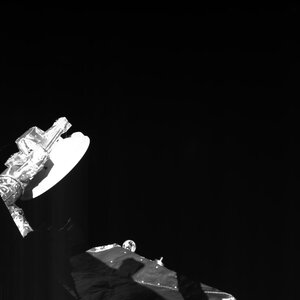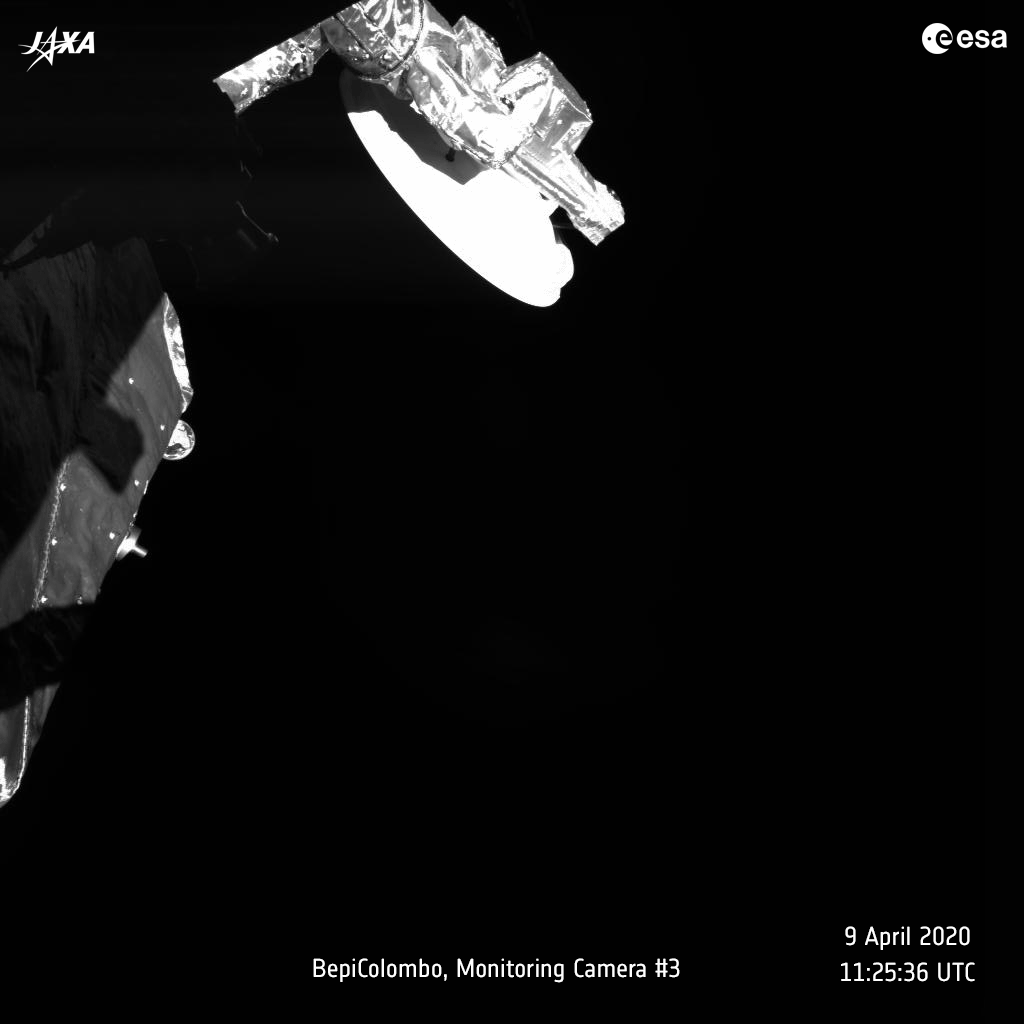

BepiColombo closing in on Earth ahead of flyby
A sequence of images taken by the MCAM selfie cameras on board of the European-Japanese Mercury mission BepiColombo as it neared Earth ahead of its gravity-assist flyby manoeuvre in April 2020. Images in the sequence were taken in 10-minute intervals from 11:25 UTC until 15:00 UTC on 9 April 2020, less than a day before the closest approach. As BepiColombo approached the planet at a speed of more than 100 000 km/h, the distance to Earth diminished from 281 940 km to 230 000 km during the time the sequence was captured.
In the image Earth appears behind the spacecraft structure and above the high-gain antenna, and moves slowly to the centre of the image.
The manoeuvre, first of an overall nine flybys but the only one at Earth, helped steer the spacecraft towards Venus as it gradually closes in on its target orbit around Mercury. During its seven-year cruise to the smallest and innermost planet of the Solar System, BepiColombo will twice use the gravity of Venus and six times that of Mercury to break against the gravitational pull of the Sun. This constant need to break requires either a lot of fuel or a complicated trajectory with many flybys, otherwise BepiColombo would not be able to enter the correct orbit around Mercury.





